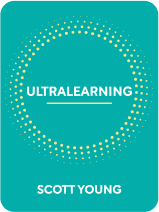

This article is an excerpt from the Shortform book guide to "Ultralearning" by Scott Young. Shortform has the world's best summaries and analyses of books you should be reading.
Like this article? Sign up for a free trial here .
Why should you learn how to study before you start studying? What benefits can metalearning have?
Metalearning, or learning how to study, is the process of building a learning roadmap so you don’t go into a new subject blind. When you fully understand what you need to learn and how, you accelerate the study process.
Keep reading to find out why you should learn how to study properly rather than jumping in unprepared.
Metalearning: Learning How to Study
The only risk of self-directed learning is selecting a poor method of learning. Metalearning (learning how to study) lessens this risk. This article teaches you how to build a learning roadmap so you can start your learning project off on a solid foundation. A map shows you how a topic is constructed, what types of skills or knowledge will support growth, and which strategies will support you to achieve efficient proficiency.
For example, let’s say you’re learning freestyle dance. You might research popular freestyle dancers who have achieved your desired skill level and determine how they each reached it.
How Do You Conduct Metalearning Research?
Metalearning research is the first step of any ultralearning project. When you have an advanced understanding of what you need to learn and how best to learn it, you accelerate what would normally be a longer process in a formal education setting. In this case, you personalize the learning process, bypassing the challenges of the poor teacher-to-student ratio typically found in a class setting. As you complete more learning projects, metalearning skills naturally improve, as does your awareness of your capacity for comprehension, your best methods for problem-solving, and your most efficient scheduling structure.
For each specific project, ask three questions: Why, what, and how?
Why?
Asking why gives you clarity of purpose, and this enables you to tailor your learning to what is most important to you. Any learning project you undertake is going to be rooted in one of two core motivations.
Motivation #1: Instrumental
This type of learning is motivated by the desire to achieve some kind of (usually external) goal or result. Often, this is a professional goal. For example, if the advancements in technology make some of your professional skills obsolete, you might use an instrumental learning project to learn new skills that will keep you relevant in your field.
When learning for an instrumental reason, valuable questions to research are: “What is my goal?” and “Will learning this skill or topic support me to achieve that goal?” You don’t want to waste time or money learning a skill that won’t benefit your goal. For example, if your goal is to get a well-paying job, and you want to go back to school to increase your chances of achieving that goal, make sure you select a degree that will lead to a well-paying job.
Another method you can use to conduct your “why” research is to talk to people who have already achieved your goal. For example, if you want to be a lawyer, talk to successful lawyers and get a sense of what that world entails and what their path to success has been. If you can, set up a brief face-to-face meeting (and be clear on the purpose of the meeting).
Motivation #2: Intrinsic
This type of learning is motivated by personal desire, not achievement-oriented desire. For example, if you want to learn freestyle dancing for the purpose of your own enjoyment, you have intrinsic motivation.
Asking why is valuable here because you want to be sure you’re focusing on learning what is most valuable to you, not what the industry finds most valuable. For example, if you want to learn freestyle dance for your own enjoyment, your learning goals and methods are going to be different than if your goal were to become a professional freestyle dancer.
What?
Now that you know your motivation for a learning goal, get a clear sense of what you need to learn. Start by breaking down your skill or topic and placing the aspects into three categories:
- Facts constitute anything you might need to commit to memory. You don’t need to have a deep understanding of facts—it’s just necessary to be able to access them when you need them. For example, to learn a language, there are certain elements of grammar or punctuation that you only need to memorize, versus deeply understand.
- Concepts are ideas that can’t simply be memorized and require flexible understanding. For example, if you’re studying law, you’ll file law principles into this column.
- Procedures constitute anything that requires practice. Conscious thinking is not necessarily required. For example, learning how to rollerskate is almost entirely built on practice with little conscious thought. There are many skills that can fit this category, though some may also require memorization of facts or understanding of deeper ideas. For example, learning a new language falls under both “facts” and “procedures.”
Highlight the sections you expect the most difficulty from. This gives you clarity in advance on problem areas, which gives you a chance to prepare strategies and materials for overcoming those obstacles as they arise. For example, let’s say you’re learning how to draw portraits, and you know that a large part of successful drawing is placing facial features accurately. To prepare, you might use a portrait photo for reference and superimpose the image over each of your drawing attempts to check that your skill for drawing facial features is improving.
How?
The purpose of this step is to figure out how best to learn what you need to learn. There are two methods for this.
Method #1: Benchmark
Benchmarking means determining commonalities in the methods of those who have learned what you want to learn. Researching how others approach learning is a good way to build a foundational approach for yourself. For example, if you want to learn business, research the curriculum of the most notable business schools, study their course list, and/or study the syllabi for the most relevant courses. Taking the time to do this now saves time later by streamlining your learning approach.
Method #2: Emphasize and/or Exclude
Once you’ve made a list of materials, regularly evaluate it to see if it needs to be revised or upgraded. Determine the aspects of what you’re learning that are most critical to your goals, then evaluate your learning strategies and emphasize or exclude areas of focus by order of priority. For example, if you’re studying Spanish and your learning goal is to speak Spanish on a fast-approaching trip to Spain, you might prioritize pronunciation and vocabulary and delay the study of spelling until later in the learning process.
When Should You Stop Researching and Start Studying?
Research is an important part of the process. However, too much research can turn into procrastination and a way to avoid the discomfort of the actual learning process. Use the following strategies to evaluate if you’re doing too much or too little research.
Strategy #1: The Rule of 10%
Calculate how long you expect the learning process to be, then calculate 10% of that time. For example, if you plan to spend three months on your learning goals, averaging about two hours a week, your total learning time will be roughly 24 hours. 10 percent of that is roughly 2 ½ hours spread out over about one week. Fewer than 2 ½ hours might not be enough research, and more than 2 ½ is likely too much.
Strategy #2: The Information Balance
The Law of Diminishing Returns states that the longer you invest your time in something, the more the benefits diminish. This means there will be a “sweet spot,” or a point where more research is no longer valuable and switching to active learning is best for growth. Check if continuing your metalearning research is a valuable use of time by noting its efficacy in practice. Spend a couple of hours doing the research, and then a couple of hours engaging in active learning. Which feels more beneficial? If it’s research, you can afford to spare more time for it. If it’s active learning, you’ve likely completed enough research to move forward to practice.
Long-Term Benefits of Metalearning
You may not initially see the benefits of metalearning, but the more learning projects you complete, the better your metalearning skills will become, and the more benefits you’ll see. With each completion, you develop new strategies, new approaches to finding material, more efficient time management habits, and improved self-discipline. You also develop greater confidence (a core purpose of ultralearning), which inspires you to initiate new and more challenging learning projects.

———End of Preview———
Like what you just read? Read the rest of the world's best book summary and analysis of Scott Young's "Ultralearning" at Shortform .
Here's what you'll find in our full Ultralearning summary :
- How a formal education doesn’t open the doors it once could
- The 9 core principles that can help you master any skill
- How to create a self-directed learning project to help you advance in your field






